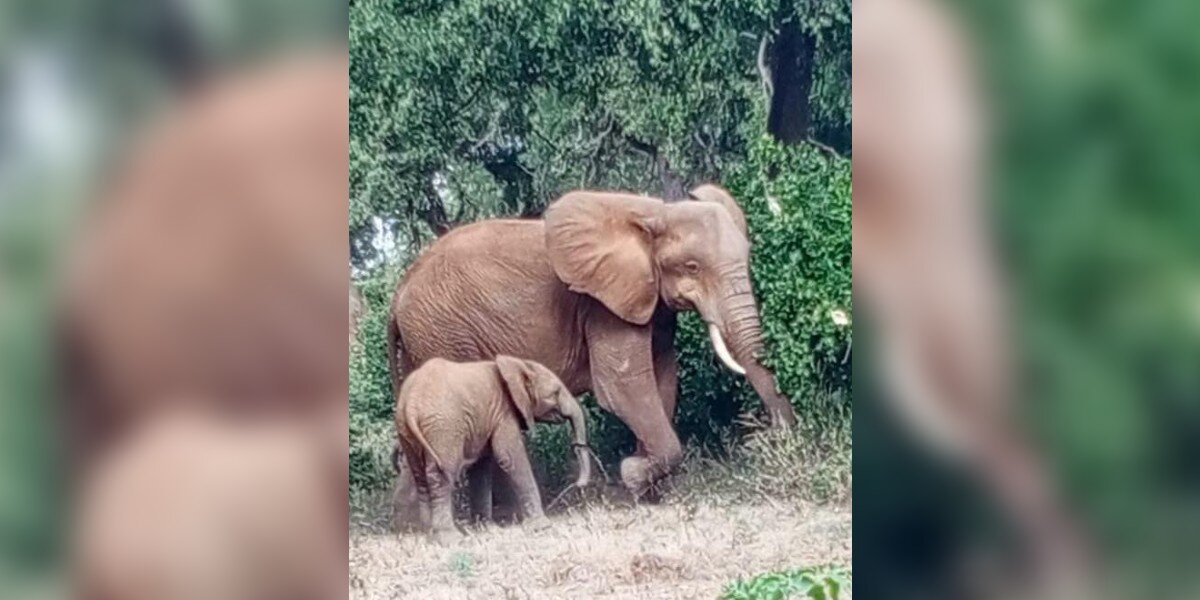A Brave Rescue in Tsavo East National Park
Last week, a heartwarming yet alarming scene unfolded in Tsavo East National Park in Kenya. A 1-year-old baby elephant was seen walking alongside her mother, appearing healthy at first glance. However, a visitor to the park noticed something unusual about the calf’s trunk — it looked as if it were cinched tightly.
Upon closer inspection, it became clear that the baby had become ensnared by a wire snare, a cruel tool often used by poachers. These snares are designed to tighten the more an animal struggles, making them particularly dangerous for young animals like this calf.
Elephant calves depend entirely on their mothers for survival, and elephant mothers are known for their fierce protection of their young. Unfortunately, even the most dedicated mother would not have been able to remove the snare without risking harm to herself or her baby. The situation was dire, but help was on the way.
A concerned individual reached out to the Sheldrick Wildlife Trust (SWT), a renowned conservation organization dedicated to protecting wildlife in Kenya. SWT quickly mobilized its team and worked closely with the Kenya Wildlife Service (KWS) to respond to the emergency.
The Urgency of the Situation
Sean Michael, director of communications at SWT, explained the severity of the injury. “As the calf grew — and thus, her trunk grew in diameter — the snare would have continued to slice into it,” he said. Without intervention, the baby could have lost part of her trunk, which would significantly impact her ability to survive in the wild.
Injuries from wire snares can lead to severe infections and, in some cases, death. Additionally, such injuries make it difficult for young elephants to keep up with their herd, which is crucial for their development and safety.
The veterinary team quickly located the injured calf and her mother within the park. Finding the pair was a relief, but the next challenge was even greater: approaching the baby without causing distress to her protective mother.
“Elephant mums are very protective,” Michael said. “It would be stressful and dangerous to attempt to separate the pair for treatment.”
To ensure the safety of both the calf and her mother, the team decided to sedate them both. This allowed the veterinarians to carefully remove the snare and treat the wound.
A Successful Recovery
The baby elephant lay still as the vet cleaned her wound. While the cut was deeper than expected, the wire hadn’t been wrapped around the trunk long enough to cause serious damage. According to Michael, the calf would make a full recovery over time.
Once the team revived the calf and her mother, the baby appeared slightly disoriented. However, she quickly calmed down when she reunited with her mother. The pair then walked back to their herd, with the calf following closely behind her mom.
The Sheldrick Wildlife Trust shared the positive news on X, stating, “A little life saved. An elephant family kept whole.” Their efforts highlight the importance of conservation work and the critical role organizations play in protecting wildlife.
If you’re inspired by this story and want to support the vital work being done by the Sheldrick Wildlife Trust, you can visit their website to make a donation. Every contribution helps ensure the survival of elephants and other endangered species in Kenya and beyond.






